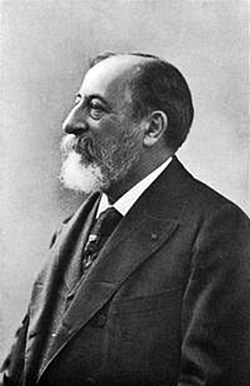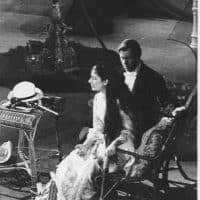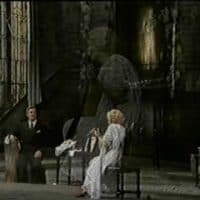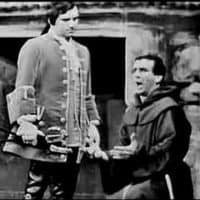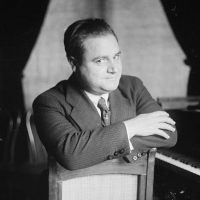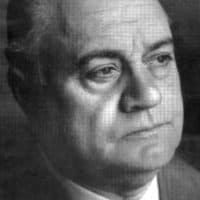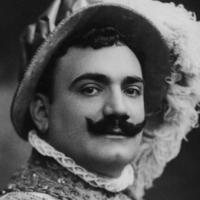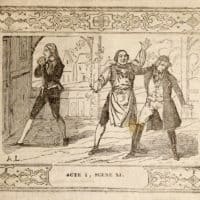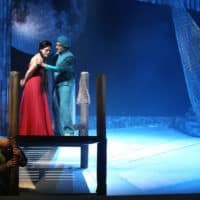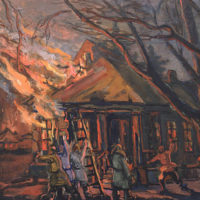1
1aint-Saëns – like Berlioz, is one of a rare breed – a French composer who does not owe his success to opera. His father was a civil servant who died from consumption when the boy was only a few months old which meant that he was brought up by his mother and his Great-Aunt and it was she who encouraged his musical talent. He was a child prodigy in every sense and soaked up knowledge like a sponge. By the time he was three he had learned to read and write and by the time he was eight he had some mastery of Latin and was well on his way to being a multi-faceted intellectual. He studied botany, geology, archeology and astronomy; became an expert at mathematics and held scholarly discussions with some of Europe’s finest scientists. While music always remained his life’s work he also wrote poetry and became a successful playwright. He was a member of the astronomical society of France, lecturing on mirages and even planned his concerts to coincide with astronomical events such as solar eclipses.
His early musical education revealed him as a phenomenon. His first public appearance was when he was 5 years old when he accompanied a Beethoven violin sonata and at 10 years of age he gave his first public performance as a pianist, playing Mozart’s Piano Concerto No.15 in B Flat major followed by various pieces by Handel, Hummel and Bach. As an encore he offered to play any of Beethoven’s 32 piano sonatas from memory.
He later studied composition under Fromental Halevy at the Conservatoire de Paris. At the age of sixteen he wrote his first symphony and went on to become a piano virtuoso rivalling the best in Europe.
 As his career progressed he concentrated on the Organ as a way of earning his living. Such was his ability that in 1857 he was appointed organist at the Eglise de la Madeleine where he was to remain until 1877. His weekly improvisations were the talk of the Parisian public, and in 1866 prompted Liszt to observe that Saint-Saëns was probably the greatest organist in the world.
As his career progressed he concentrated on the Organ as a way of earning his living. Such was his ability that in 1857 he was appointed organist at the Eglise de la Madeleine where he was to remain until 1877. His weekly improvisations were the talk of the Parisian public, and in 1866 prompted Liszt to observe that Saint-Saëns was probably the greatest organist in the world.
Saint-Saëns remained faithful to orchestral music throughout his life, composing over 300 works, many of which are still immensely popular although he was disappointed that out of the 13 operas he wrote, only one – ‘Samson et Dalila’ achieved lasting successs.
During his early career Saint-Saëns was regarded as something of a pioneer, championing the works of Liszt and Wagner, but as time passed he became more conservative in his outlook and the 20th Century found his being regarded as Ultra-conservative. Small wonder really as his career started out with Chopin and Mendelssohn who were the idols of the music world and started to fade at the turn of the Century with the dawn of the recording industry when he recorded various piano works and when in 1908, he wrote the film music for a silent film, ‘The assassination of the Duke of Guise’ which lasted 18 minutes. His career closed with his death in 1921 at the beginning of the Jazz age.
Saint-Saëns’ opera, ‘Samson et Dalila’ did not have an easy passage. The work is based on the well known bible story from the Book of Judges in the Old Testament, of the love of Samson, a Hebrew leader, for Delilah, a Philistine beauty who seduces and betrays him into captivity. Saint-Saëns’ works on the project for years in the course of which he altered his concept several times. In 1866 he decided to set the subject as an oratorio. Several sections were performed in private performances but were not well received. The works was finally premiered in Weimar in 1877 with some assistance from Liszt, when Saint-Saëns was unable to find a theatre to produce it in France. It was not staged in Paris until 1890 and its biblical content prevented it being performed in London until 1909 when it was given at Covent Garden with great success which endures to the present day.
Dalila’s aria, mon coeur s’ouvre à ta voix depicts her seduction of Samson in a beautiful, irresistible melody accompanied by swirling, heady orchestration which over the years has become the ‘pièce de résistance’ of every aspiring mezzo-soprano.
1
Mon cœur s’ouvre à ta voix,
comme s’ouvrent les fleurs
aux baisers de l’aurore!
Mais, ô mon bienaimé,
pour mieux sécher mes pleurs,
que ta voix parle encore!
Dis-moi qu’à Dalila
tu reviens pour jamais.
Redis à ma tendresse
les serments d’autrefois,
ces serments que j’aimais!
Ah! réponds à ma tendresse!
Verse-moi, verse-moi l’ivresse!
Dalila! Dalila! Je t’aime
Ainsi qu’on voit des blés
les épis onduler
sous la brise légère,
ainsi frémit mon coeur,
prêt à se consoler,
à ta voix qui m’est chère!
La flèche est moins rapide
à porter le trépas,
que ne l’est ton amante
à voler dans tes bras!
Ah! réponds à ma tendresse!
Verse-moi, verse-moi l’ivresse!
Dalila! Dalila! Je t’aime
1
My heart opens to your voice
Like the flowers open
To the kisses of the dawn!
But, oh my beloved,
To better dry my tears,
Let your voice speak again!
Tell me that you are returning
To Delilah forever!
Repeat to my tenderness
The promises of old times,
Those promises that I loved!
Ah! respond to my tenderness!
Fill me with ecstasy!
Dalila! Dalila! I love you!
Like one sees the blades
Of wheat that wave
In the light wind,
So trembles my heart,
Ready to be consoled,
By your voice that is so dear to me!
The arrow is less rapid
In bringing death,
Than is your lover
To fly into your arms!
Ah! respond to my tenderness!
Fill me with ecstasy!
Dalila! Dalila! I love you!
Recordings
- Mon Coeur – Christa Ludwig – 1973
- Mon Coeur – Marina Domashenko
- Mon Coeur – Olga Borodina
- Mon Coeur – Irina Arkhipova – 1980
- Mon Coeur – Rita Gorr
- Mon Coeur – Elena Cernei
